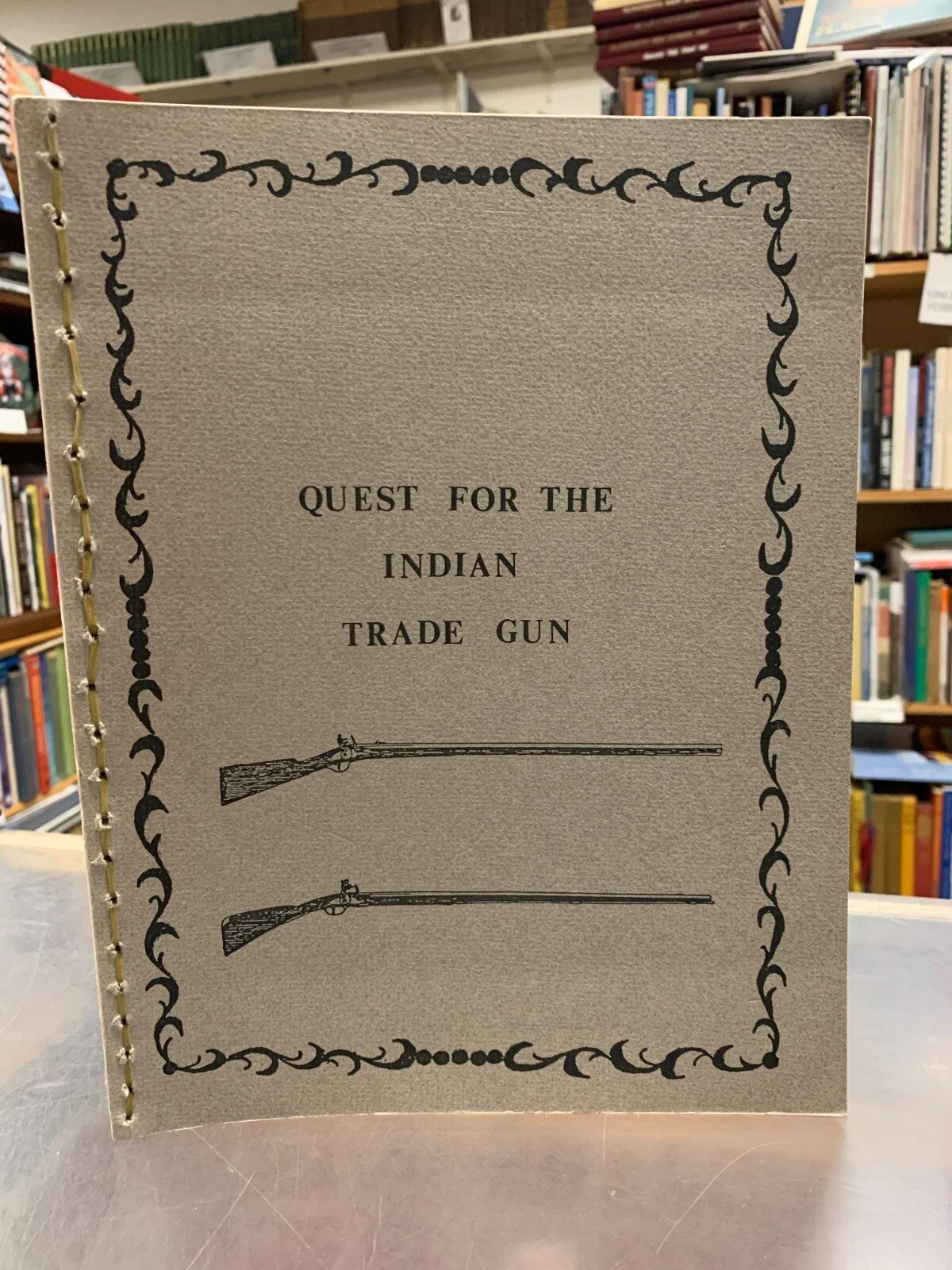 Image 1 of 6
Image 1 of 6

 Image 2 of 6
Image 2 of 6

 Image 3 of 6
Image 3 of 6

 Image 4 of 6
Image 4 of 6

 Image 5 of 6
Image 5 of 6

 Image 6 of 6
Image 6 of 6







Quest for The Indian Trade Gun, Heath, 1st ed. 1992
This book is a study of twenty Indian Trade guns of the 1720 era that were recovered from Indian campsites in Mississippi.
Acid etchings were conducted on samples extracted from the very rusted gun barrel fragments to determine how the barrels were forged by French and English gun barrel blacksmiths.
The following is from a letter the author, Bob Heath, sent Artisan regarding this book:
"The first part tells about French and English trade guns of the 1720 era that are dug up in Mississippi by archaeologists. It tells how they were forged and something about the different types of materials used. The English used what I refer to as a "dirty steel" while the French used a very high quality wrought iron in their gun barrels. The back or appendix of the book has some add-hoc information about how modern day barrel smiths forge gun barrels in imitation of the archaic methods that were used in the 18th century (like they do them at Williamsburg, Virginia) . I have forged three rifles and one smoothbore using these methods and have shot all four of them and one pistol. Currently I am helping one blacksmith learn some of this as time allows. We currently have five pistols in production. They are relatively easy to make and much easier to learn on."
-Artisan Ideas
This book is a study of twenty Indian Trade guns of the 1720 era that were recovered from Indian campsites in Mississippi.
Acid etchings were conducted on samples extracted from the very rusted gun barrel fragments to determine how the barrels were forged by French and English gun barrel blacksmiths.
The following is from a letter the author, Bob Heath, sent Artisan regarding this book:
"The first part tells about French and English trade guns of the 1720 era that are dug up in Mississippi by archaeologists. It tells how they were forged and something about the different types of materials used. The English used what I refer to as a "dirty steel" while the French used a very high quality wrought iron in their gun barrels. The back or appendix of the book has some add-hoc information about how modern day barrel smiths forge gun barrels in imitation of the archaic methods that were used in the 18th century (like they do them at Williamsburg, Virginia) . I have forged three rifles and one smoothbore using these methods and have shot all four of them and one pistol. Currently I am helping one blacksmith learn some of this as time allows. We currently have five pistols in production. They are relatively easy to make and much easier to learn on."
-Artisan Ideas
